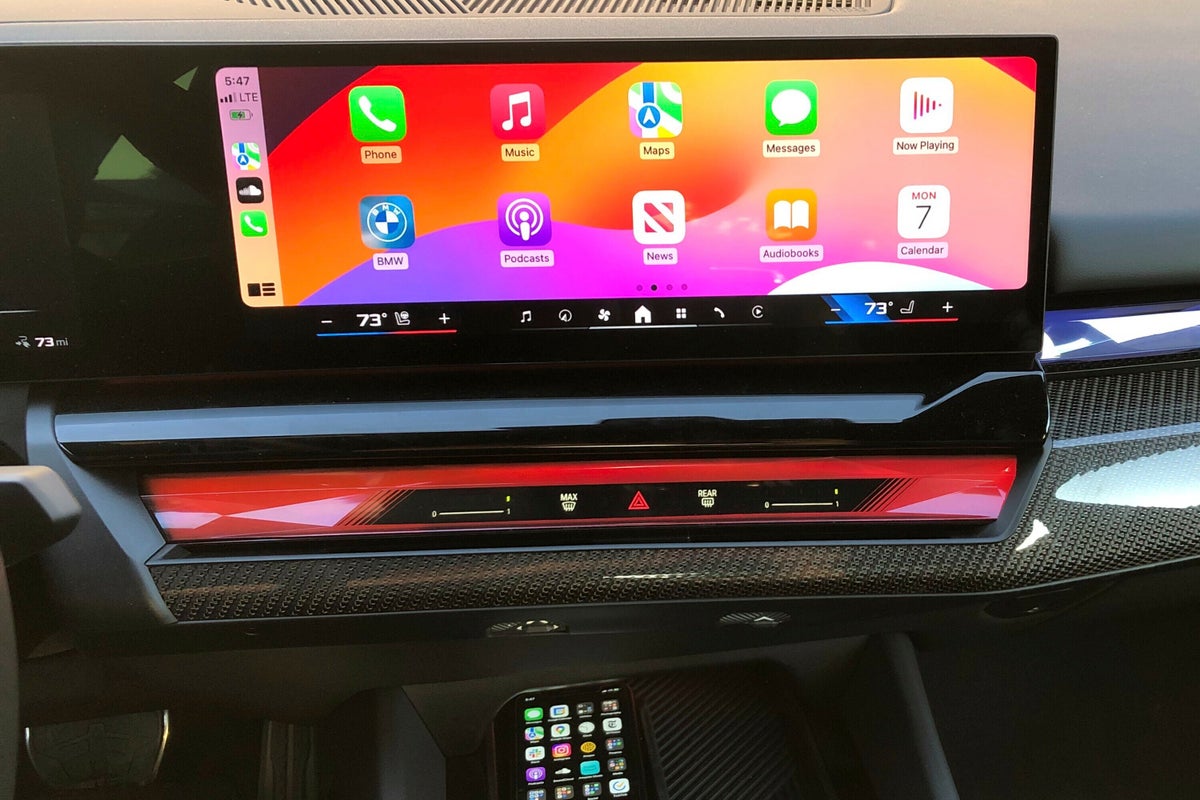
Your support helps us to tell the story
Technology features in modern vehicles can make driving easier and more enjoyable. But when buying your next car, it can be hard to know which features are useful and which ones are more like gimmicks. And many times, these features are only available on certain trim levels. To help you out, Edmunds’ car experts have come up with a list of their top four features and offer insight on how to get them.
Easy phone pairing: wireless connectivity and wireless charging
Most modern vehicles come with Apple CarPlay and Android Auto. These features allow you to display and use many of your smartphone’s apps and features on the vehicle’s touchscreen. Typically, you’ll need to connect your phone with a USB cord to make Apple CarPlay and Android Auto work. But some vehicles also support wireless connectivity. A wireless connection allows you to pair your phone and stop fussing around with a cord every time you get in to drive.
To make the most of it, buy a vehicle that also has a built-in wireless phone charger. Having a wireless charger fully cuts out the need for a cord. The charging pad also serves as a dedicated location for your phone, which isn’t a certainty in every car.
How to get it: Research if the vehicle you’re interested in supports wireless connectivity for Apple CarPlay and Android Auto. Most vehicles either have it or they don’t, though a few do offer it as part of an upgraded infotainment system. A wireless smartphone charger is commonly an option or one of the extra features that come on a more expensive trim level.
Perfect parking: surround-view camera
A surround-view camera, also known as a 360-degree camera, uses an array of cameras placed in different locations on the vehicle to create a stitched-together image on the infotainment screen. The view, which looks like it’s made by a single camera hovering above the vehicle, is as amazing as it is helpful.
A surround-view camera system is helpful to have when you’re in a tight parking lot or when you’re parallel parking. The top-down view makes it a lot easier to park perfectly between the lines or be the right distance from the curb. The most helpful camera systems also come with parking sensors that provide auditory or visual feedback to indicate how far away you are from an obstacle.
How to get it: A surround-view camera system usually comes on a more expensive trim level or as part of an optional package.
Less fatigue in heavy traffic: adaptive cruise control
If you frequently navigate stop-and-go traffic on the highway, adaptive cruise control can provide helpful relief from traffic fatigue. Like regular cruise control, it allows you to set a speed that the vehicle will maintain. In addition, adaptive cruise control can automatically slow your vehicle when it senses a slower vehicle ahead and then accelerate back up to your set speed when traffic is moving again. These systems allow you to set the following distance behind the vehicle in front as well.
Some versions of adaptive cruise can bring your vehicle to a complete stop, shrinking the following distance as speeds decrease. Adaptive cruise will then return your vehicle to a preset speed as traffic begins to move again. And it all happens without touching any pedals.
How to get it: Adaptive cruise is often standard equipment on many new vehicles, even inexpensive ones.
Protection from the unseen: rear-cross traffic warning
How many times have you backed out of a parking spot or driveway, unable to see if there’s a vehicle bearing down on you from the side? It’s a too common scenario that a rear cross-traffic warning system often solves brilliantly. Sensors at the back of the vehicle can sense what’s coming before you can and sound or display an alert warning that a vehicle is approaching.
These systems usually alert you soon enough that you’ll have time to press on the brake and stop. Some vehicles also can also automatically apply the brakes if the driver doesn’t react in time.
How to get it: Rear cross-traffic warning typically comes bundled with blind-spot warning because the two features rely on the same sensors and technology. The two features aren’t always standard equipment, however.
Edmunds says
Edmunds editors find these features to be the most beneficial for adding a layer of protection without intruding obtrusively on the driving experience. It’s worth researching how to get these features on your next vehicle.
____
This story was provided to The Associated Press by the automotive website Edmunds.
Josh Jacquot is a contributor at Edmunds.







